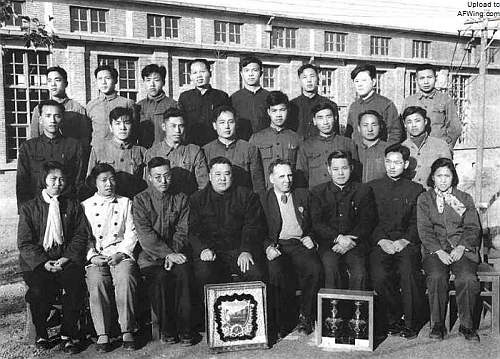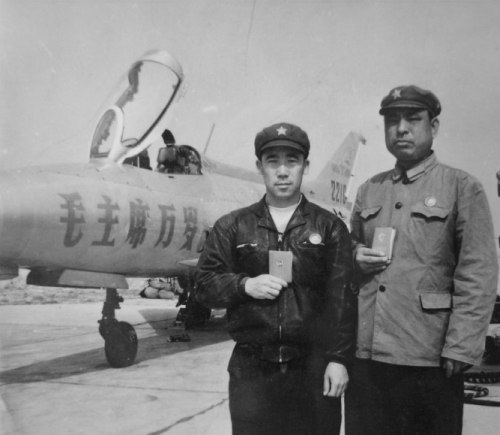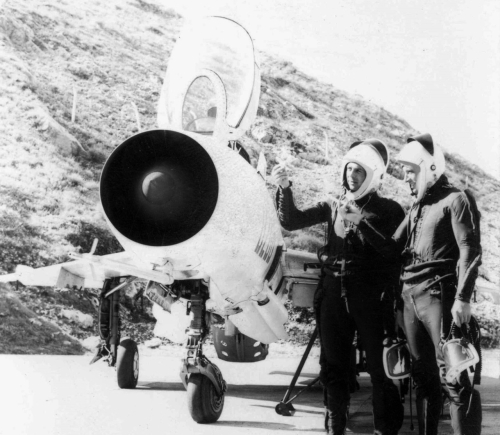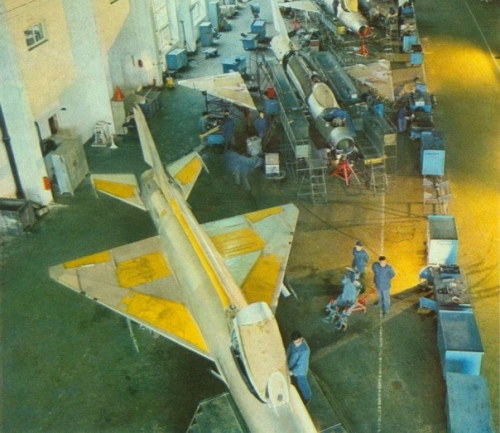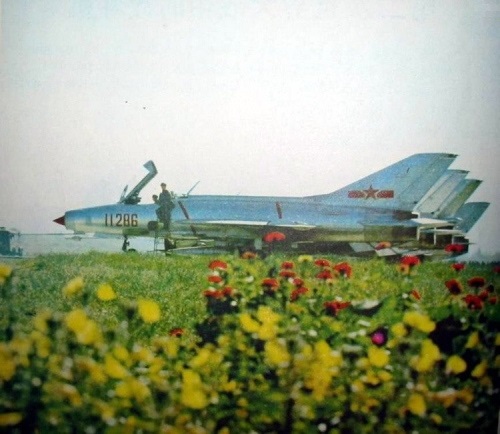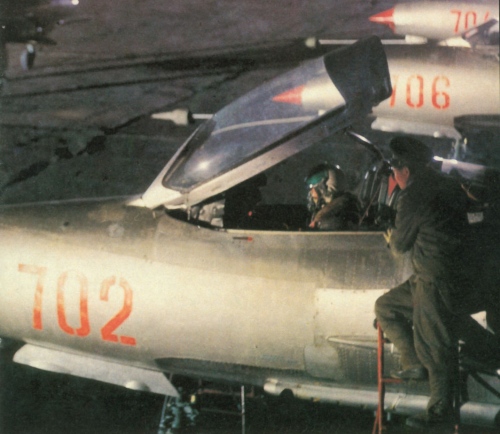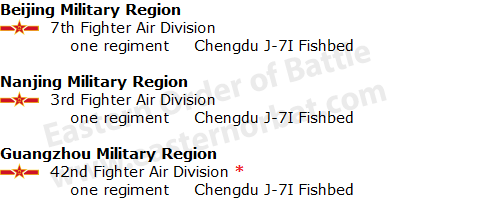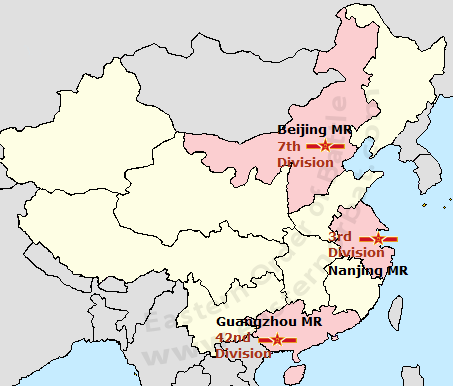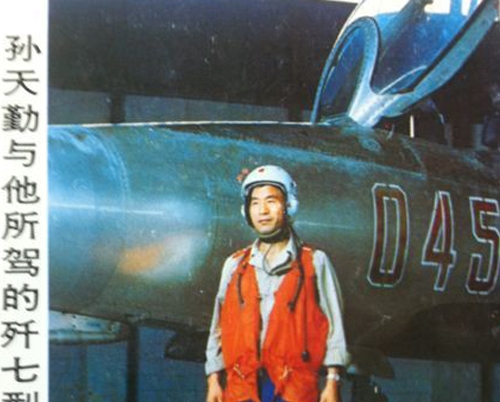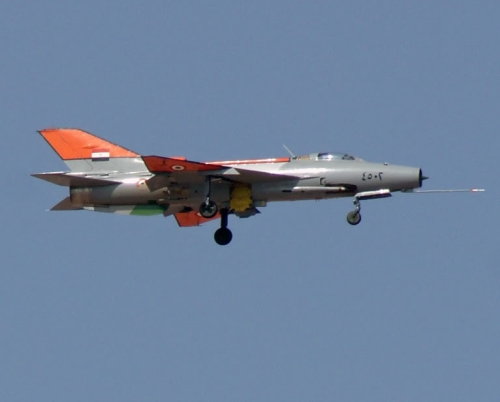|
|
||||||||||||||||||||||
 |
||||||||||||||||||||||
 |
|||
|
Order of Battle of the early Chinese J-7 Fishbed |
|||
|
Shenyang J-7 “sans suffixe” interceptor fighter (Type 62): |
|
|
||||||||||||||||||||
|
Since the People's PLAAF urgently needed the new fighter. However, for various reasons, Chengdu and Guizhou factories were unable to manufacture J-7 aircraft. The J-7 production was temporarily transferred to the Shenyang Aircraft Factory. On 17th January 1966 the first Shenyang-built J-7 Fishbed made its maiden flight at the hands of Ge Wenrong. In the course of the tests the fighter attained a top speed of Mach 2.02. Yet the type's production career at Shenyang was brief due to the 'Cultural Revolution'; the factory managed to complete only a dozen J-7s sans suffixe. These aircraft were almost identical to the Soviet-built MiG-21F-13; the main differences lay in the temporary lack of missile armament and the fixed air intake centre body (the Chinese had not received the part of the manufacturing documents concerned with the movable centre body). |
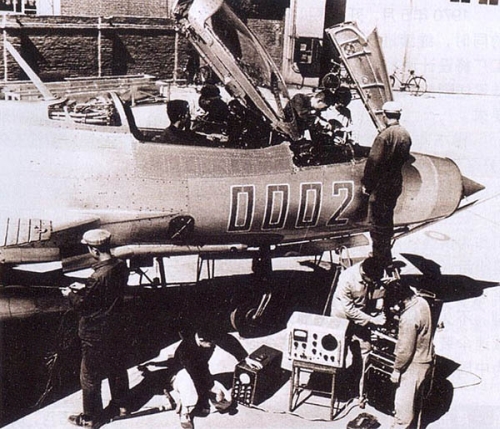 |
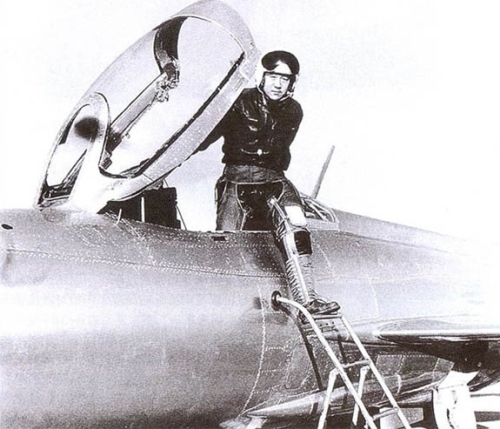 |
|
Shenyang Aircraft Factory started production in 1967. Between 1967 and 1970, only 39 pieces of J-7 Fishbed were made. One prototype, 24 pcs new product and 15 pcs from Soviet CKD kits. In 1970, production was stopped. 12 J-7 out of the 39 produced were exported to Albania! |
|
|
||||||||||||||||||||||||||||||||
|
|
|
Chengdu J-7I Fishbed interceptor fighter: |
|
|
||||||||||||||||
|
|
|
|
||||||||||||||||||||||||
|
The production accelerated after the Chinese Cultural Revolution. Chengdu Aircraft Factory produced 153 pcs J-7I interceptor fighter between 1978 and 1981 for PLAAF. After 1981 produced F-7A export version for Egypt. The brake parachute container of the later J-7I version relocated to the at the base of the rudder after 1980. |
|
|
|
|
||||||||||||||||||||||||||||
|
|
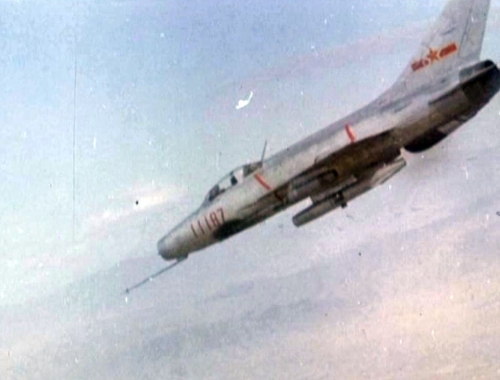 |
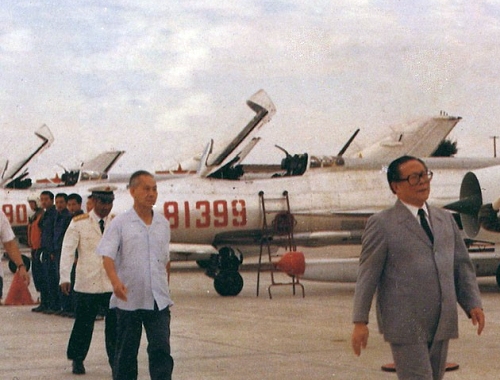 |
|
The Chinese Air Force used a large number Chengdu J-7I Fishbed fighter aircraft than testbed. |
|
|
||||||||||||||||||||||||||||||||
|
Prototype’s history source: |
